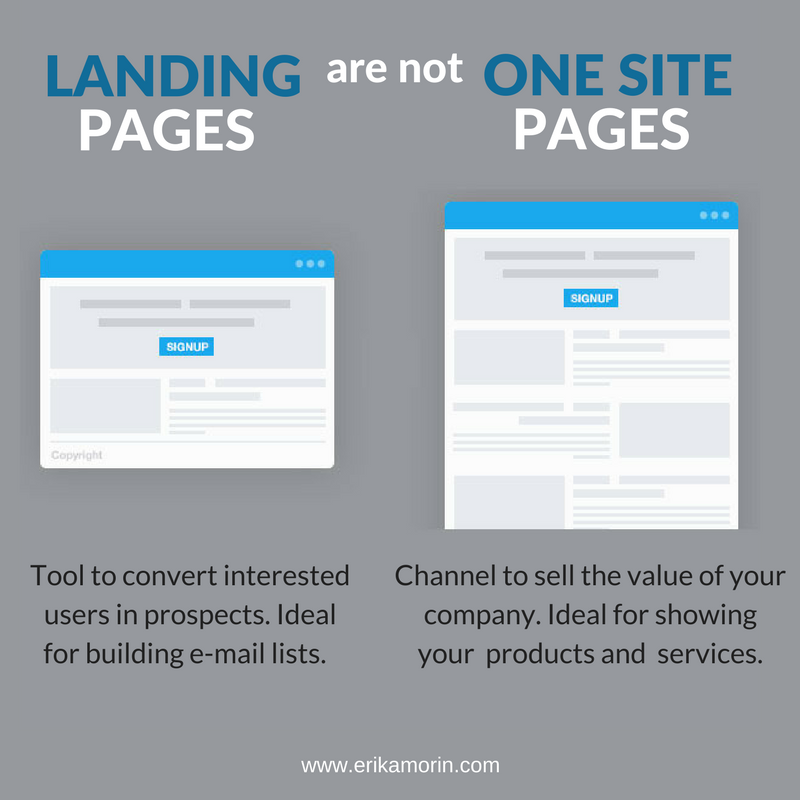Find out how a “landing page” differs from a single page website.
According to the user, the “landing pages” and the “one site page” have similarities. In general, these tools are considered as a Web site with restricted navigation that shows the information easily. They both have in common the use of texts, images, and videos and sometimes contact forms to make easier the relationship with the company. But sometimes, this functional generalization brings clients and marketing colleges to think that “landing pages” and “one site pages” are identical. Although, these digital tools have very different objectives.
One Site Pages
One-page websites are an alternative for businesses and professionals who want to have an online presence without the complexity of a traditional website. The key features of single-page websites are:
- The page is long and is divided into blocks of information.
- Navigation is done on the same page from top to bottom using the main menu.
- Most of the content are nice images and concise texts. The information contained is general: company’s value proposition, products, services, testimonials and contact information.
- The contact form is optional, but it is important to offer on the page other ways to contact the company.
Like a traditional Web site, the one-page web is used to increase the credibility of your business when the potential client is in the awareness phase. Think about the one site page as your business card on the Internet but in a lighter version.
Landing Pages
Landing Pages are intended to guide the user to a specific action. Their objective is to attract the attention of certain potential customers to engage them through some activities, for example: registering for an event, downloading an e-book or buying a product using a promotional code. Here are the attributes of landing pages:
- The page is short and simple.
- It does not contain a navigation menu.
- The message is very specific, and the value proposition is unique.
- The contact form is mandatory to request information from the customer and after sending the offer (product, discount or service).
The landing pages can be compared to printed flyers with discount coupons or promotions. Their goal is to get the customer to the store to buy the products or retrieve some information to contact him later. In the case of landing pages, the goal is to obtain the customer’s e-mail through a special and targeted offer.
What is the best option for your business?

The choice for your business depends as always on your strategy. If you already have a website, you do not need a one-page website. However, if you are building your website for the first time or you’re thinking about redesigning, I recommend you start with the simplified one page version. This option allows you to quickly change the design or the content to attend your potential customer needs, according to the size of your business and Internet trends.
Regarding the landing pages, they are relevant if you are thinking about developing a customer acquisition strategy.
In any case, the proper use of landing pages and single-page websites is a must in a well done digital marketing strategy. Now that you know their differences, take advantage of them!

